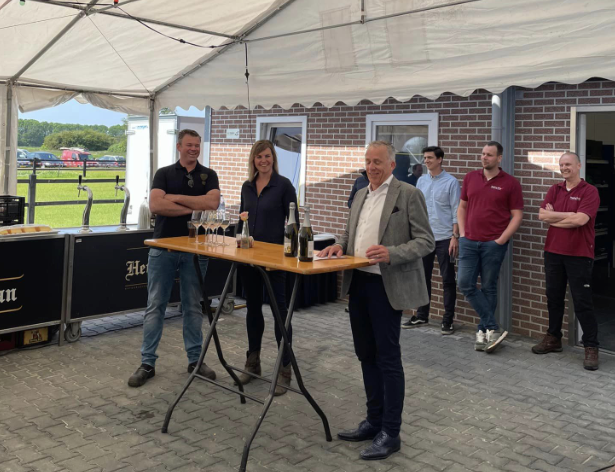Wilco Wijlhuizen, a rearer for Agromix, welcomed no fewer than 500 interested visitors to his farm during the open day on 26 May 2023. It was an ideal time as the house was unoccupied. The first flock of 17-week old laying hens had just left the new house. “Rearing that batch of 65,000 layers went like clockwork. The day-old chicks grew into healthy, robust layers without any problems,’’ explains Wijlhuizen.
The video above shows how the house was built and all the innovations used in this first conventional building with winter garden in the Netherlands.
More than 500 poultry farmers and other interested visitors from all over the country could admire this new house with their own eyes during the open day organised by the Wijlhuizen family in Holten. There was a great atmosphere on the day which was attended. by a wide variety of layer farmers, boiler farmers and farmers of parent stock in organic and conventional housing systems. Before the open day, Wilco Wijlhuizen told us about his initial experiences in the new conventional house that features an aviary system and a covered outdoor run. He was happy to share his initial findings, but noted: “You can only really take stock once you have operated for a full year.”
Strong and healthy birds
“The first rearing cycle has finished. My first impression is that animal health and welfare is good. It was a trouble-free flock of white chickens.’’ Wijlhuizen cannot state with certainty whether the housing system has an impact, but he believes the extra space for his birds made a positive contribution. The covered run extends over 20% of the total surface area of the house and the birds can walk underneath the system. “The hens just love using the outdoor run,” says Wilco. There is also enough enrichment material in the house, like straw or sawdust. All these factors certainly had a positive effect on the health and well-being of the young hens he delivered.
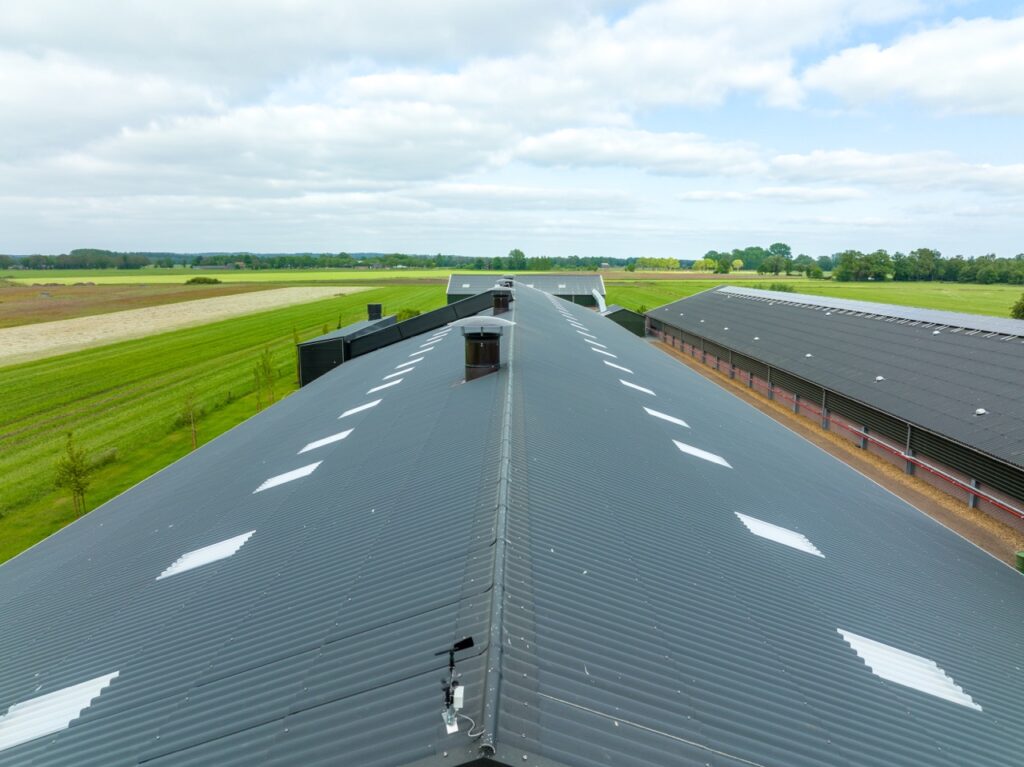
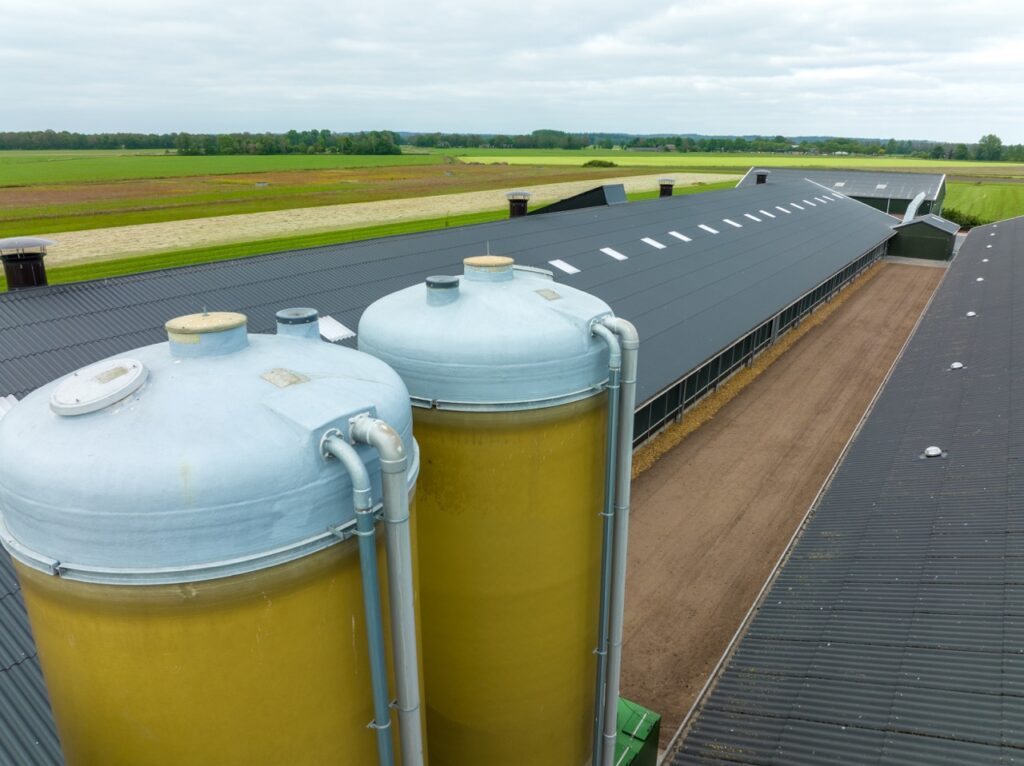
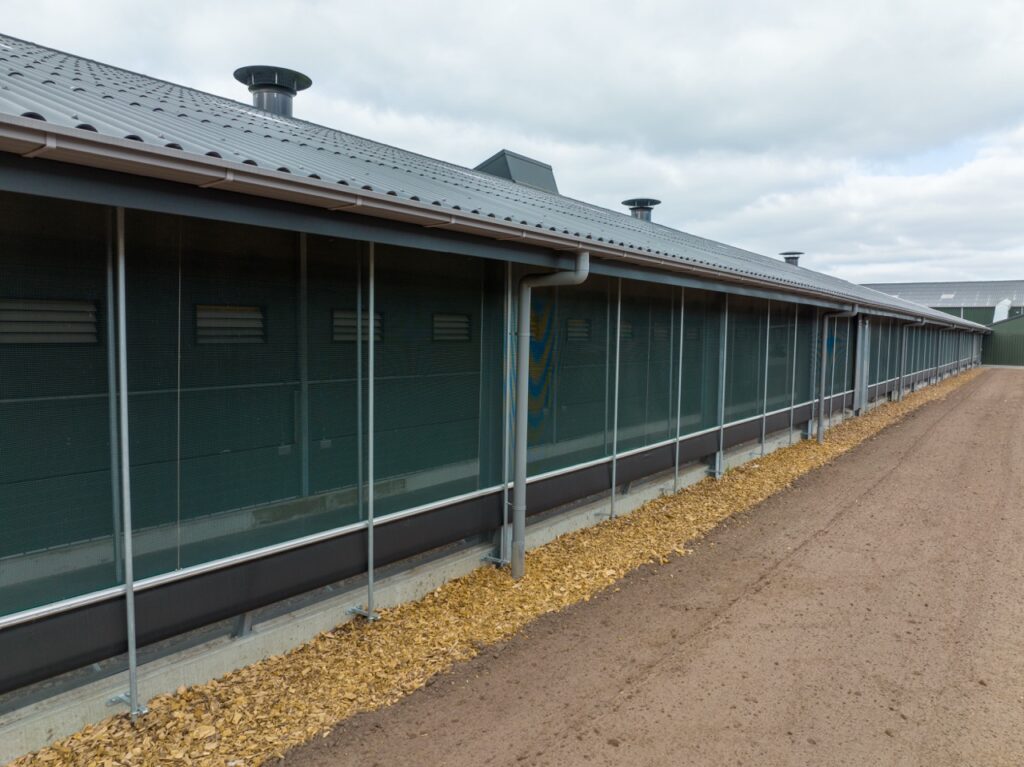
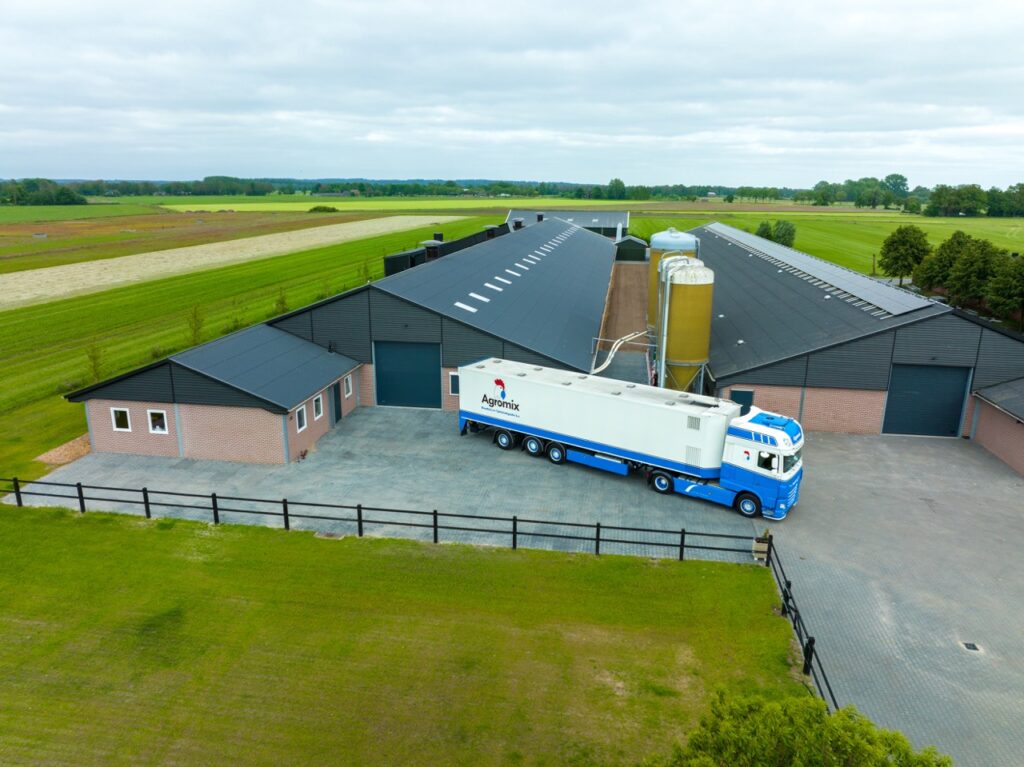
Winter garden
‘’The birds like to go outside, but they also like to come back indoors again. I was a bit apprehensive about that,’’ comments Wilco. “With an optimal light program, it is easy to entice the flock back in again to roost at night. When dusk starts to fall, you have to make sure the lights are on, so the birds calmly go back inside. Subsequently, the lighting is slowly dimmed. I haven’t had to go and retrieve a single hen from the winter garden in the evening. The young hens also quickly got used to entering the aviary in the evening. I had expected some of them to settle underneath the system, but I haven’t had any problems at all.’’
Technology in practice
The new ventilation system took Wilco some getting used to. In his new house he opted for a completely different system based on a heat exchanger. This system ensures that fresh, cold outside air is heated before it enters the house. The heat released by the air extracted from the house is mixed with the outside air coming into the house. When the air is extracted, some of the dust particles in the house are also removed. “This is definitely the case in practice. A lot of dust is filtered out,’’ says Wilco. However, there is still quite a high volume of dust left behind in the house, but this is partly due to the relatively thick layer of litter on the floor. At the beginning, he experienced some problems with the system that automatically removes the litter.
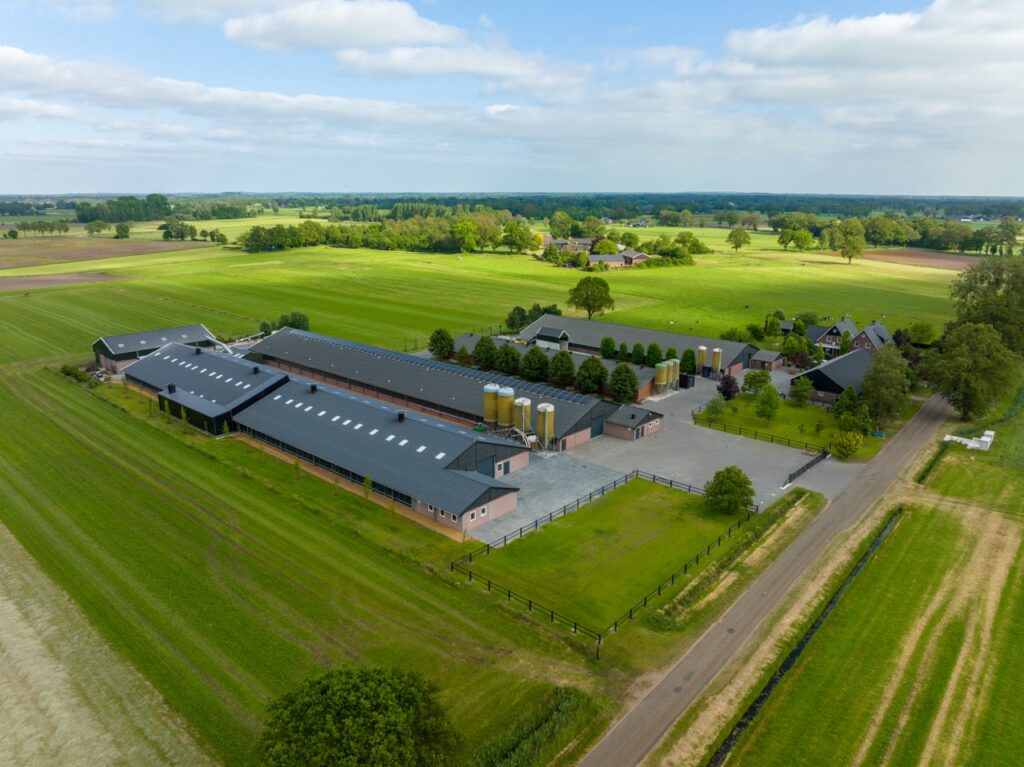
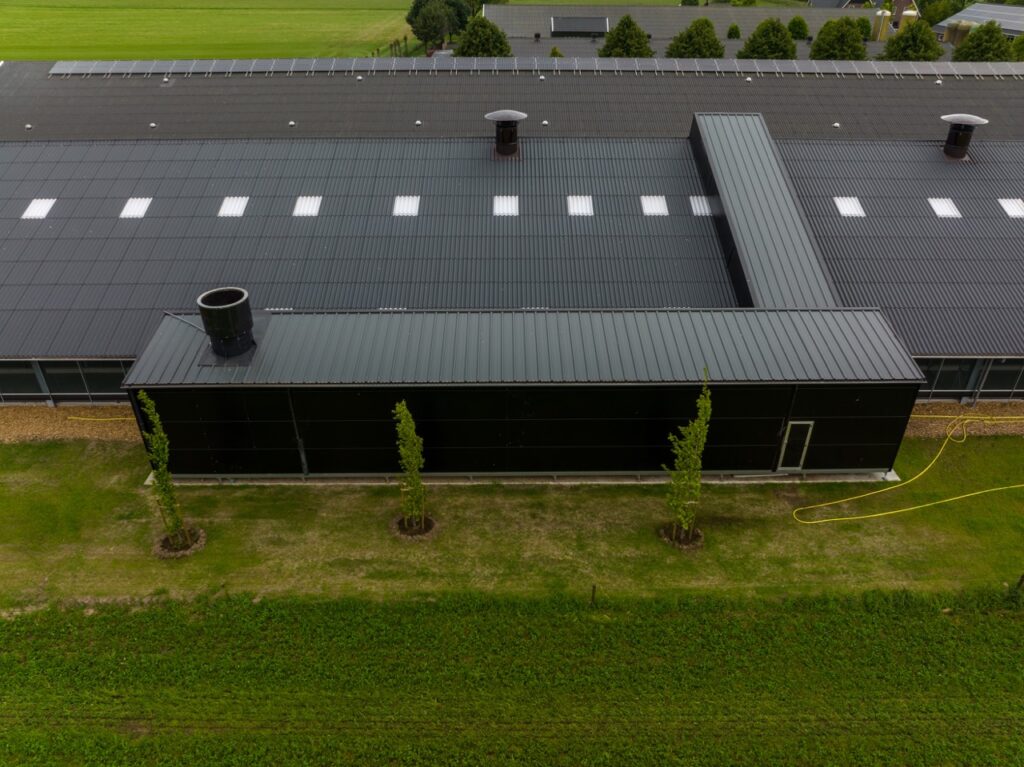
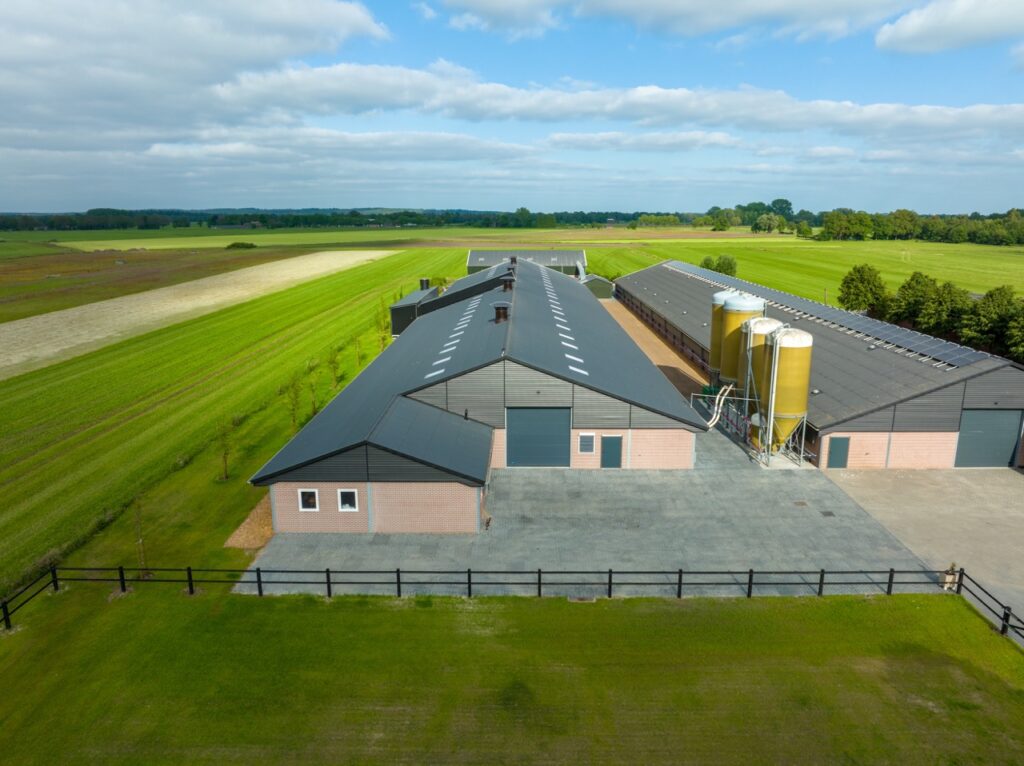
The heat exchanger has an auger that removes the accumulated dust. This caused some problems initially, as the dust blocked the auger. “The auger couldn’t cope with all the dust. Now that a larger dust storage unit has been installed, the problem seems to have been solved for the moment.’’
Another minor issue according to Wilco is that all the feathers in the house sometime make the mechanical systems seize up. In this respect, there is a significant difference between the mature laying hens and the pullets. The pullets moult and lose their feathers, which then accumulate and get stuck in the system. This can cause problems. Wilco is still trying to find a solution to prevent this.
Setting and adjusting
“Getting the settings right and adjusting the various systems, such as the heat exchanger, air inlet ducts and the pop holes to the outdoor run was no easy task in the first rearing cycle”. Wilco still has to finetune the settings, and he has to take into account everything that goes on in the house. “You have to deal with unexpected situations, and either you or the supplier need to find a practical solution. I expect to come up against other issues during the year. For example, there are wind breaks in the winter garden that close automatically in poor weather conditions. We operated them manually during the first cycle, but they should work automatically from now on. We”ll have to wait and see how this works in practice.’’
Consciously chosen concept
Being the first rearing farm in the Netherlands to build a covered outdoor run attached to the new house obviously meant taking a risk. “After all, you’re constructing new buildings designed to last for the next 30 years. It’s vital to choose a future-proof system. This house equips me to face the future with confidence. Providing the birds with a covered outdoor run is already a criteria in various schemes for eggs. This requirement may well also apply to rearing stock in the future at some stage. Investing in this system now distinguishes me already from other poultry farmers , so I hope it adds value to my business model. I should ultimately see this reflected in a good price,” says Wilco. In his opinion, the main advantage is the smooth transition for the 17-week old pullets from the rearing house to their destination at layer farms. “The layer farmers are supplied with a layer that is already used to an aviary, or other housing system, with outdoor access. The birds are also used to different temperatures because they are free to range indoors or outdoors. This results in healthy and robust layers. A flock that is more self sufficient and less work in the end for the poultry farmer.’’ This unique system makes a fine addition to the range offered by Agromix.
"The first rearing cycle went like clockwork. The day-old chicks grew into healthy, robust layers without any problems,'' explains poultry farmer Wilco Wijlhuizen.

